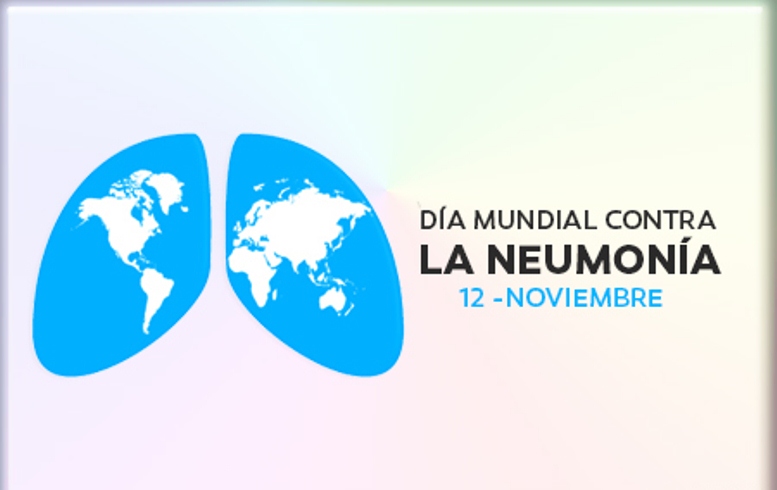 Pneumonia kills nearly 800,000 children under the age of five each year, making it a leading cause of death in children, including many newborns, who are highly susceptible to the disease.
Pneumonia kills nearly 800,000 children under the age of five each year, making it a leading cause of death in children, including many newborns, who are highly susceptible to the disease.
Therefore, November 12th is World Pneumonia Day, a disease that has wreaked havoc in many parts of the world. It can be said that it is one of the most neglected diseases.
Pneumonia, also called pneumonia, is a disease that causes inflammation of the lungs due to a viral or bacterial infection.
With the right equipment, mainly a chest x-ray or x-ray, it can be caught in time and stopped completely by taking antibiotics. What’s more, the disease has been shown to reduce mortality by 42% in children 2 years and younger if diagnosed promptly.
The main purpose of the day is to raise awareness so that they can detect the disease in time, but it also seeks countries to take preventive measures through vaccination days, investment in equipment and the purchase of medicines that can help with treatment, especially for all children and The elderly are the two groups most vulnerable to the virus.
A series of talks, seminars and other events will also be held on this day to educate people and provide them with all the support they need.
Pneumonia is an acute respiratory infection that affects the lungs. They are made up of small sacs called alveoli, which fill with air when a healthy person breathes. In pneumonia patients, the alveoli in the lungs fill with pus and fluid, causing breathing pain and limiting oxygen absorption.
Pneumonia is the single largest cause of death among children worldwide. It affects children and their families around the world, but death tolls are highest in South Asia and sub-Saharan Africa. Children can be protected through simple interventions for this disease, which can be treated with low-cost, low-tech medicines and care.
A variety of infectious agents—viruses, bacteria, and fungi—can cause pneumonia. The most common are the following:
Pneumonia can be spread in many ways. Viruses and bacteria commonly found in children’s noses or throats can infect their lungs when inhaled. They can also spread through airborne droplets produced when coughing or sneezing.
In addition, pneumonia can be spread through blood, especially during childbirth and soon after delivery. More research is needed on the various pathogens that cause pneumonia and how they are transmitted, as this information is critical for treating and preventing the disease.
Viral and bacterial pneumonia present similarly. However, viral pneumonia may have more symptoms than bacterial pneumonia. Pneumonia can be diagnosed by tachypnea (shortness of breath) or subcostal adduction (involving a depression or retraction of the lower half of the chest) in children younger than 5 years old who present with cough and/or difficulty breathing, regardless of fever. During inspiration (the chest in a healthy person expands during inspiration). Wheezing is more common with viral infections.
Very severely affected babies may be unable to eat or drink and may experience loss of consciousness, hypothermia and seizures.
Most healthy children can fight off infection through their natural defenses, but immunocompromised children are at greater risk of contracting pneumonia. Malnutrition or malnutrition may weaken a child’s immune system, especially those who are not exclusively breastfed.
Previous illness such as measles or asymptomatic HIV infection also increases a child’s risk of pneumonia.
The following environmental factors also increase children’s susceptibility to pneumonia:
Pneumonia should be treated with antibiotics. The antibiotic of choice for first-line treatment is amoxicillin dispersible tablets.
Most cases of pneumonia require oral antibiotics, which are usually prescribed in a medical setting. These cases can also be diagnosed and treated at the community level by trained community health workers using inexpensive oral antibiotics. Hospitalization is recommended only in severe cases.
Preventing childhood pneumonia is an essential component of any strategy to reduce child mortality. Vaccination against Hib, pneumococcal, measles and whooping cough is the most effective way to prevent pneumonia.
Adequate nutrition is essential to boost a child’s natural defenses, starting with exclusive breastfeeding for the first six months of life. In addition to effectively preventing pneumonia, it can also help shorten the course of the disease if the child gets sick.
The number of children infected with pneumonia can also be reduced by correcting environmental factors such as indoor air pollution (e.g., providing clean, affordable indoor kitchens) and promoting good hygiene practices in overcrowded households.
